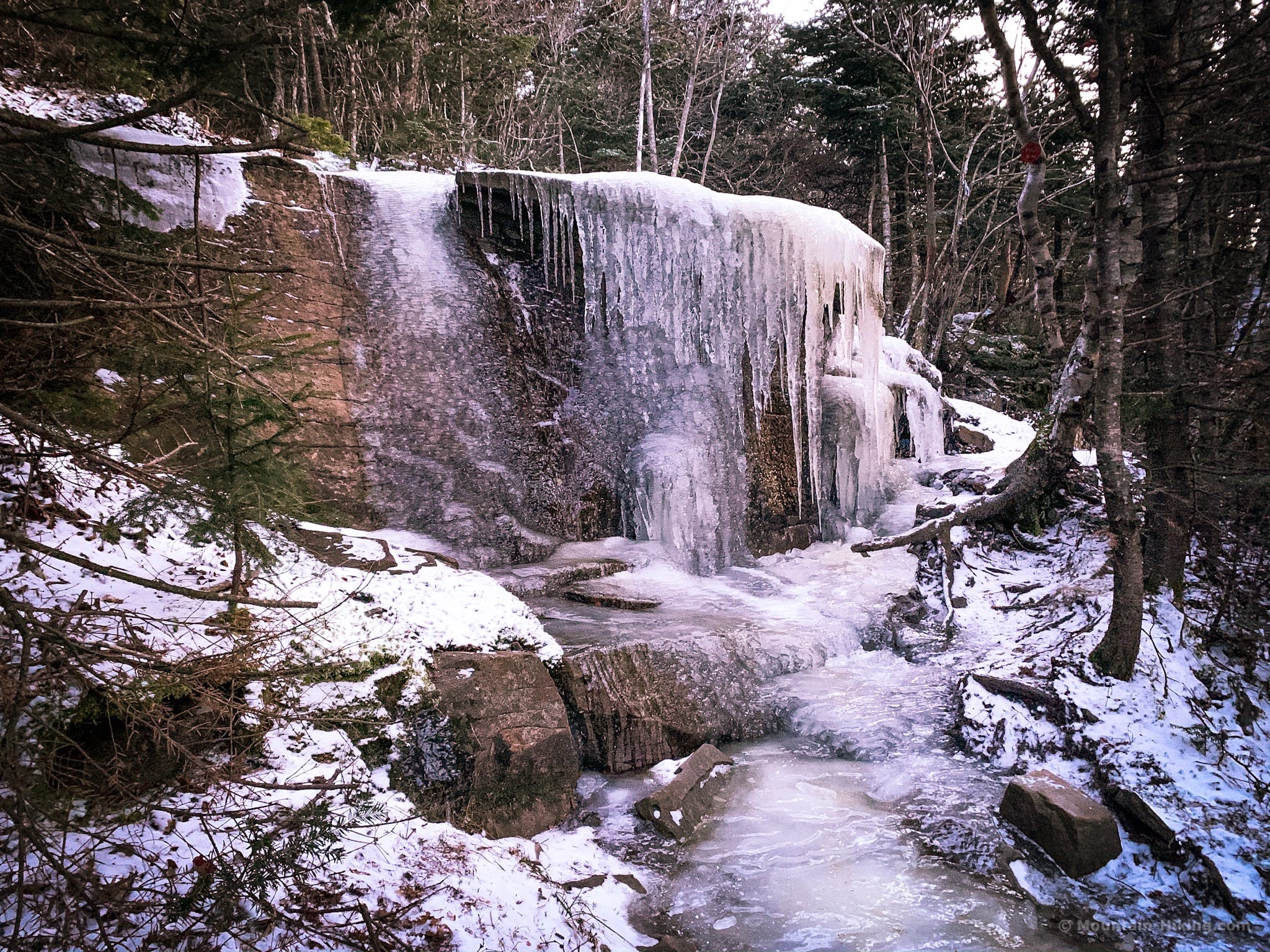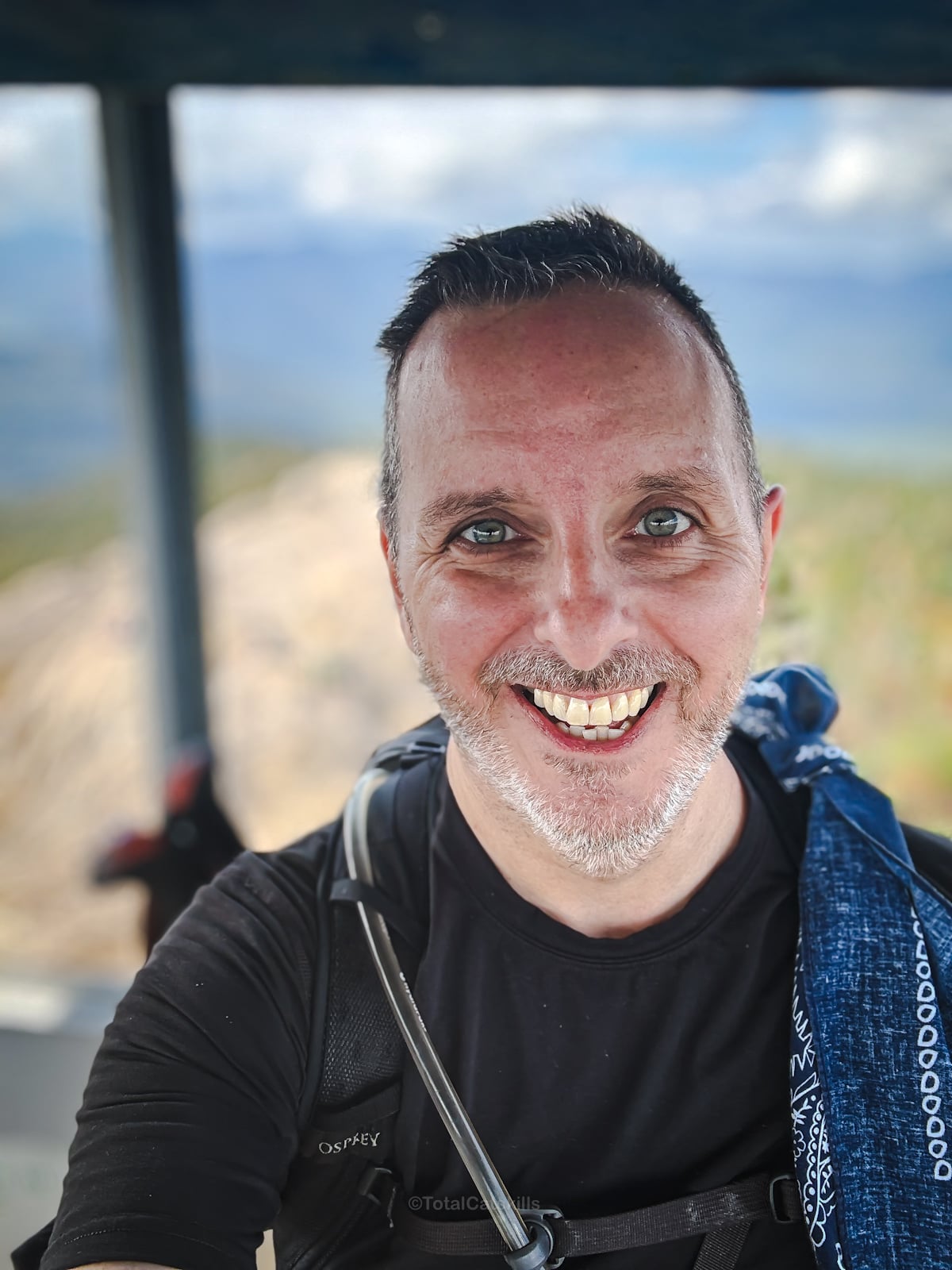Disclosure: This content may contain affiliate links. Read my disclosure policy.
The classic route allows you to warm up slowly over fairly level terrain, then takes the super-fun turn up the eastern side of the mountain.
Hiking Trail Description
Indian Head is the smallest peak on the infamous Catskills Devil’s Path trail, but it’s also the most delightful.
The other five mountains are wonderful too, of course, each in their own way — the scale! the drama! the views! — but hiking Indian Head is a special, intimate, and rewarding experience.
Fantastic terrain, epic views, a beloved cliff ascent, a long boreal summit, a steep and rugged descent, and an easy walk out through beautiful woods — this is my absolute favorite single-mountain hike in the Catskills.
Disambiguation
There are multiple locations named “Indian Head” in New York State. The most famous and scenic is Indian Head in the Adirondacks. This trail guide is for Indian Head in the Catskills, on the Devil’s Path.
BTW, you might also enjoy…
- ADK › Whiteface Mountain via Marble Mountain
- DANGER › 6 Feet Under? How Our Adirondack Hike Turned Deadly Serious (Substack)
- ADK › Hurricane Mountain Fire Tower
- CATSKILLS › Catskills Fire Tower Challenge 2025
- Follow › My Instagram @TotalCatskills
- Follow › My writing for Times Union
Indian Head Catskills Hiking Trail
The Indian Head Catskills hiking trail includes…
- The eastern terminus of the infamous Devil’s Path trail
- Original growth hemlock stands
- Sherman’s Lookout
- A giant Devonian panini press
- A wonderfully do-able rock chute climb
- One of the great Catskills scenic views
- A boreal summit
- My favorite Catskills boulder
- A classic Catskills notch
- A beautiful walk-out
Allow 3-5 hours for this hike. A full breakdown is provided in the trail notes below, with 30+ breathtaking photos.

Indian Head Catskills Trail Notes & Gallery
The parking area at the end of Prediger Road is a generous loop, with lots of space for cars, but this is a popular destination — even on frigid weekends the lot can fill up early.
Note: Between November 1 and April 15 every year, the eastern end of Platte Clove Road is closed. Use this alternate route to Platte Clove Road.
You’ve got the basic details, but there’s so much more…
Unlock this exclusive content to get deep intel on this hike, including my personal tips. Immerse yourself in every layer of the journey. With Mountain-Hiking.com, you’re not just skimming the surface; you’re delving into a passionate hiker’s in-depth experience.
Become a Patreon supporter today and immediately elevate your hiking adventures with full trail beta, comprehensive insights, and stunning visuals. Experience hundreds of trails to their absolute fullest!
Similar Hikes to Indian Head Catskills
If you love Indian Head, the most obvious mountain to climb next is Twin, which you can access from Jimmy Dolan Notch, the col between the two summits.
For more of a low-key-day, try Balsam Mountain. If you’re not sure about tackling the Devil’s Path, try Balsam to feel yourself out.
Heading up to Giant Ledge and Panther makes for a longer day – but it’s suitable for anyone who can handle Indian Head.
Read More
Get full access…
Get instant access to the full version of this site and enjoy great supporter benefits: full galleries, full trail notes, early access to the latest content, and more.
Hot on the website right now…
Follow for more…
Follow my @TotalCatskills content on Instagram for regular hiking inspo and safe, inclusive community.
Indian Head Catskills Hike Trailhead
The circular parking area is quite large but fills up quickly on weekends.
Google Maps Location: 42.133939, -74.104120
The map below shows the exact topographic location of the trailhead
Cell Service
Indian Head is somehow in a decent spot for cell service, but coverage is flaky. For the first half of the hike, you’ll wander in and out of service. From the summit, you can get a weak signal. When you start heading down Jimmy Dolan notch, the signal drops more often than not. However, back at the trailhead, I was able to get texts out from the parking area. My network is Verizon. YMMV.
6 responses to “Indian Head Catskills Hike”
Your comments are welcome here…
The parent mountain for this hike is Indian Head.



Must have missed the 3400’ sign, Sean. Would have made my day having a picture next to it.
That one is easy to miss. Next time!
Mid September must be one of the best times to summit Indian Head.
For the best experience, I’d encourage a clockwise way of summering and then looping back.
We headed out mid morning, signed in at the trailhead and moved through the forest. Slowly making it higher and higher. There are a LOT of roots and you’ll need to keep your feet high so as not to catch your boots and suffer an reverse ego trip. The ground was damp and to some extent wet , but never over the toes of my boots. All of this time we wore baselayers and a vest – it was low 50°’sF.
At the junction the trails switches from red to blue markers this is where the work begins. Roots turn to rocks but the forest is spectacular and you’ll be covered from any showers, should they happen and the effort is made all the more charming with the vistas.
Be prepared to sweat a little on the ascent. You’ll know you’re on the right route when you come across the blue baseball hat from Maine!
At the upper parts of this section you’ll need to make three climbs, almost vertical and you can thank heavens for Mother Nature and her profuse roots that you can hang onto as you make your way up.
The first lookout is simply spectacular and the following ones build on it.
As with many peaks in the Catskills, the summit is not much to write home about and we simply walked past and started the descent.
While the ascent was roots and damp ground with a couple of near verticals, the descent is knee jarring, energy sapping and became frankly annoying. It just makes sense to have a nice time on your way up and thank you Sean @mountain-hiking.com for the recommendation to go clockwise.
Our loop took 4+hrs and we’ll sleep well tonight. Have fun. Be safe and healthy and please. Wear a mask when you meet others on the trail.
Glad you had a good time! One of my favorite mountains.
Something kinda cool to note, the buildings in the photo from Sherman’s lookout is the old NYC Police Camp where policemen and their families gathered on vacation every summer for decades. Ironically, my dad had been telling me about this camp where he had spent many summers with his parents. We stepped out onto Sherman’s lookout and there it was! He was so excited to see it from the lookout. He couldn’t recall exactly where it was until he saw it from the ledge 🙂
Your dad is the second person to mention the old old police camp there. How wild. Or maybe he’s the same guy who told me about it before?